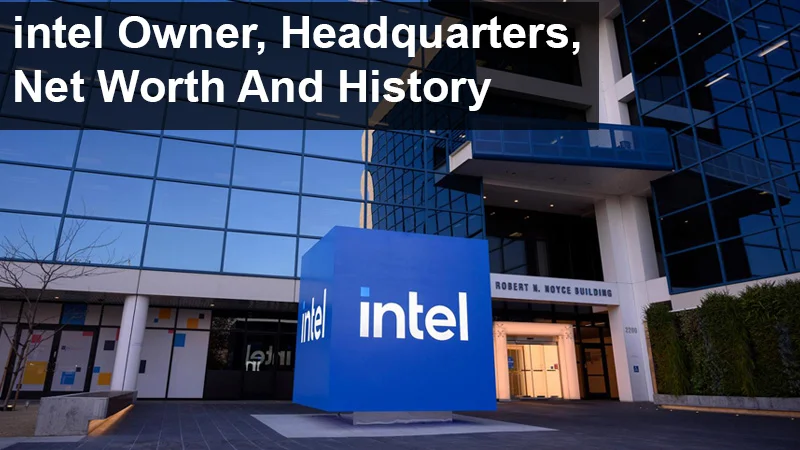Intel Corporation stands as a pioneer in the semiconductor industry, shaping the landscape of technology since its inception in 1968. Founded by Gordon Moore, Robert Noyce, and Arthur Rock, the company has evolved into a global powerhouse, driving innovation and powering the digital age.
Intel’s international footprint began with the opening of its first manufacturing facility in Malaysia in 1972. Subsequent decades saw the establishment of operations in Singapore, Jerusalem, China, India, and Costa Rica. The company’s focus on microprocessors intensified, aligning with the booming personal computer market. This pays the way for the Global expansion of Intel.
Founding and Ownership
Incorporated on July 18, 1968, in Mountain View, California, Intel emerged from the visionary minds of Gordon Moore and Robert Noyce, alongside investor Arthur Rock. With a humble beginning of 500,000 shares, the founders embarked on a journey to revolutionize the semiconductor memory market. Today, retail investors hold about 54.66% of Intel’s stock, with Vanguard being the largest shareholder.
Andy Grove, Intel’s third employee and a chemical engineer, steered the company through the dynamic landscapes of the 1980s and 1990s, propelling Intel to unprecedented growth. Gordon Moore, renowned for Moore’s Law, served as executive vice president until assuming the presidency in 1975. His visionary leadership paved the way for Intel’s enduring success. However, the semiconductor and technology industry mourned the loss of Moore, who passed away on March 24, 2023, leaving behind a legacy of innovation and inspiration.
History of Intel
In its early days, Intel focused on logic circuits using semiconductor devices, intending to capture the semiconductor memory market. The company’s first product, the 3101 Schottky TTL bipolar 64-bit static random-access memory(SRAM), marked its entry into the high-speed memory market in 1969. The 1103, a dynamic random-access memory(DRAM) chip released in 1970, became a bestseller, replacing core memory in various applications.
Intel’s journey is punctuated by groundbreaking innovations. In 1971, the company introduced the world’s first commercially available microprocessor, the Intel 4004, heralding a new era in computing. Subsequent milestones included the creation of microcomputers in 1973 and the launch of the Intel Inside marketing campaign in 1991, cementing the Pentium processor as a household name.
Intel’s collaboration with Microsoft led to the ‘Wintel’ combination, securing its position as the primary hardware supplier to the PC industry. The ‘Intel Inside’ marketing campaign, launched in 1991, further solidified brand loyalty, making Intel’s Pentium processors a household name.
Headquarters
Intel’s roots trace back to its first property purchase in 1970—a 26-acre pear orchard in Santa Clara, California. Over the decades, Santa Clara has blossomed into the headquarters and flagship location for Intel’s Museum. With over 13,500 employees in California, Intel continues to design, develop, and support semiconductor products that power the smart, connected world.
Net Worth
As of February, 2024, Intel’s net worth soared to an impressive $180.11 billion, marking a 45.04% increase from the previous year. With total assets amounting to $191.6 billion and total equity reaching $109.9 billion in 2023, Intel remains a formidable force in the semiconductor industry.
To Be Known: Robert Noyce and Gordon Moore, the founding fathers of Intel, have left an indelible mark on the semiconductor industry. Sadly, Moore passed away on March 24, 2023, at his home in Hawaii, leaving behind a legacy of innovation and technological advancement.
FAQ’s
Who are Intel's major shareholders?
Major shareholders of Intel include The Vanguard Group, Inc., BlackRock Fund Advisors, SSgA Funds Management, Inc., and Capital Research & Management Co.
Bottom Up
Intel’s journey from its humble beginnings to becoming a global semiconductor powerhouse is a testament to the vision and perseverance of its founders. The company’s evolution, marked by pivotal technological advancements, has shaped the modern world of computing.

